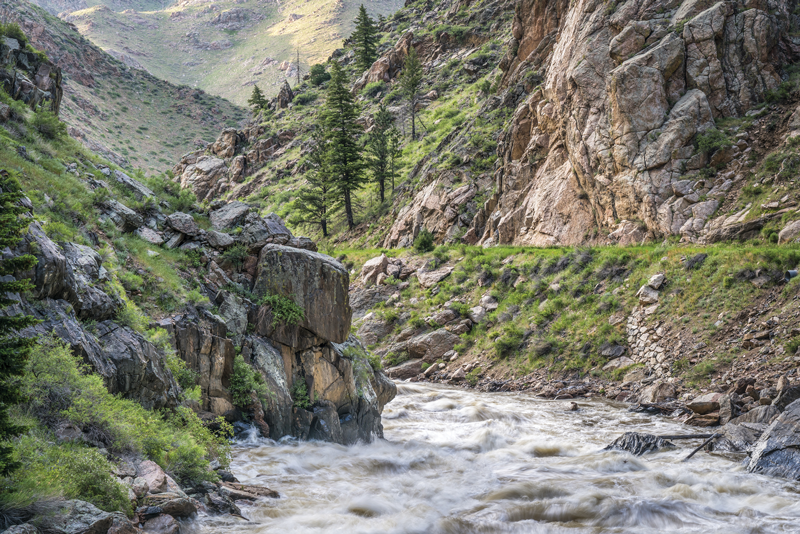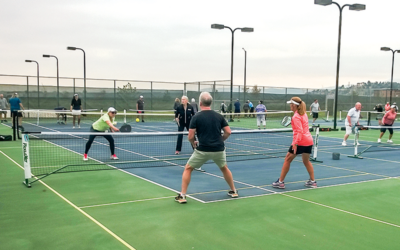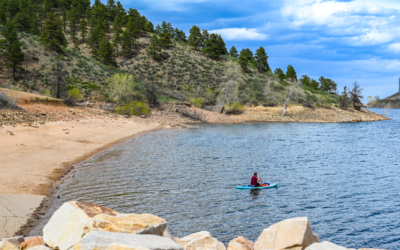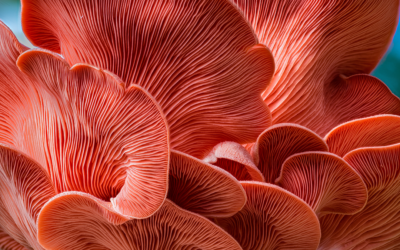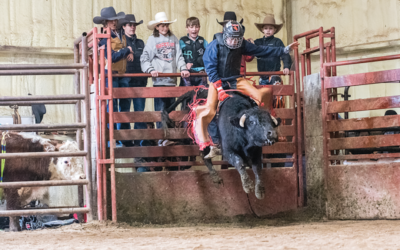Northern Colorado is an arid place, making us feel as if we are always teetering on the edge of drought. The truth is that this year, like most years in the past couple decades, Northern Colorado
is looking pretty good from a water perspective, according to local water experts.
Records show that the last substantial drought we experienced in Northern Colorado was in 2012, which was one of the driest ever, and was followed by the Flood of 2013, which was one of the wettest ever. But the drought that seared that word into our brains occurred in 2002.
“2002 reset the paradigm for us,” says Sean Chambers, director of water and sewer utilities for the City of Greeley. “It was a many-generation-level drought. It sparked the Hayman Fire, which, at the time, was the largest fire in the state’s history. It reset the paradigm for many municipalities and water users. It led to draconian drought response policies.”
This year doesn’t look anything like 2002 or 2012, thanks to foresight from city leaders, new conservation measures and, well, just dumb luck.
Where our water comes from
Municipalities along the Front Range have figured out that one of the best ways to avoid running out of water is to have multiple sources to tap into. And they had to figure it out a long time ago because water projects take many decades to come to fruition.
Communities in Colorado usually get their water from rights purchased on rivers that run near or through their communities as well as supplemental water from the Colorado-Big Thompson (C-BT) Project pipeline. The pipeline diverts from the Colorado River into Lake Granby, where it is sent through the mountains and into Carter Lake and Horsetooth Reservoir.
The Northern Colorado Water Conservancy District manages the C-BT water. For 2023, Northern Water is predicting a normal year thanks to a solid snowpack, says spokesman Jeff Stahla.
“Most of Colorado has had a really good year for water, especially on the Western Slope and in the southwest, and we are really grateful for that,” he says. “The mountains that feed Northern Colorado water are just a little above average. It’s not going to cause major concerns and it’s not super great. Some years you have to worry about flooding, and we are nowhere close to that.”
Planning for the future
Even so, water groups remember 2002, and our population continues to grow, which is why every water group in the area is in some stage of planning to either expand existing reservoirs or come up with other ways to store water.
Seventeen years ago, the City of Fort Collins started planning the expansion of Halligan Reservoir near Red Feather Lakes to hold 14,600 acre-feet of water, which is more than double what it currently holds, according to Alice Conovitz, water conservation specialist with City of Fort Collins Utilities.
“We hope to hear from the Army Corps of Engineers by the end of this year,” she says, adding that it would be just one step of many needed to get construction started on the expansion by 2026.
The Northern Integrated Supply Project is also working to expand two reservoirs (Glade northwest of Fort Collins and Galeton northeast of Greeley) to provide 40,000 acre-feet of water for 15 different water providers. Construction on Glade is expected to start in 2025, Stahla says.
Northern Water is also about halfway done with construction of the Chimney Hollow Reservoir near Carter Lake, which will hold an additional 30,000 acre-feet of water for 12 different water providers.
The City of Greeley went a different route after spending more than a decade trying to expand a reservoir. They bought into an underground aquifer near Carr that already contains 1.2 million acre-feet of water and has the ability to store more, according to Chambers.
“That will give us good drought protection,” he says.
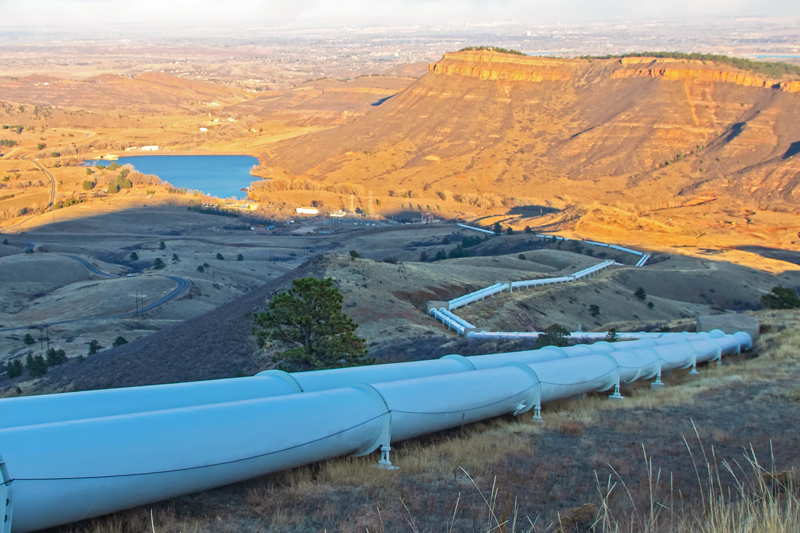
The Flatiron Penstocks west of Berthoud deliver water to Front Range water users of the Colorado-Big Thompson Project.
Does conservation really work?
It was 1996 when the TV show “Seinfeld” created an episode called “The Shower Head,” where the characters went to the black market to get real shower heads instead of the low-flow varieties that were popular at the time. Jokes aside, from shower heads to toilets to dishwashers and washing machines, there have been technological advancements in water efficiency that we barely notice now. And they made a huge difference.
In Fort Collins, per-person use of water has dropped by 30 percent since 2000, says Conovitz. In Greeley, while the population increased by about 20,000 people in 15 years, demand for water has remained flat, according to Chambers.
“For all the communities along the Front Range, all of our highest demand periods are from before 2000,” Chambers says. “That level of water efficiency savings is not achievable again. That was the golden age of efficiency. Now we are in a period of diminishing return. Now, if you spend $50 more for even more efficiency, you get a very small return.”
Water-efficient appliances are referred to as “passive” conservation, but cities also encourage residents to put some real work into saving water.
In Greeley, the city offers incentives to developers to use non-potable water for irrigation. In fact, the city mandates that any irrigable land over two acres must use non-potable water, which saves the city from running it through the water treatment plant, Chambers says. To move this water, the city uses ditches.
“There are strong economics behind doing that,” he says.
Home landscaping also continues to be a big focus for water conservation. Northern Water installed so-called “Conservation Gardens” on its property to model appropriate gardening for our arid climate.
“We invite anyone to come out to our gardens, which are open during daylight hours seven days a week,” Stahla says.
A lot comes down to luck
For the most part, Mother Nature has been kind to Northern Colorado for more than a decade, says Greeley’s Chad Gimmestad, senior forecaster for the National Weather Service in Boulder.
Typically, he says, cycles of weather every three to five years from the El Niño and La Niña patterns do have effects in Colorado, but they affect weather patterns north and south of us more. Still, La Niña years, like the one we saw at the tail end of last winter, tend to be drier. But the pattern shifted a little this year, giving the northern mountains a snowpack that is supplying our water at about 120 percent of what is normal.
As La Niña fades, El Niño cycles traditionally mean more snow than usual for Northern Colorado. But climate change has made predictions more difficult.
“If you look back 30 years, you can see it,” Gimmestad says. “If you talk to old farmers, they will tell you something has changed.”
__________________________________________________
What is an acre-foot?
This is how you measure a large volume of water. An acre-foot is how much water it would take to cover an acre of land one foot high. That equates to 326,000 gallons, which is approximately what it takes to supply an average home’s indoor and outdoor watering needs for a year.
__________________________________________________
What about fire and extreme weather danger?
Climate change impacts Colorado with higher temperatures and more moisture in the air. But another pattern has also emerged.
“The long-term trend is toward less severe weather in the Front Range, especially in tornadoes. We might be seeing less hail, but not [a smaller] size of hail,” says Gimmestad.
Even so, individual storms can be monsters.
“Climate change has put more moisture in the environment,” he explains. “So, when you get a storm, there is more fuel to deal with.”
Fire is the bigger threat now, according to Gimmestad, and that seems to be especially true in Northern Colorado. He says the fire season in the mountains will likely be delayed more than in past years because the winter snowmelt was slowed by late-season storms. Fire danger is expected to be about normal once that snow does melt.


